How we used funds to launch Kids in the Middle
Peter Gavan, Chair of Trustees, writes
In creating Kids in the Middle, we were faced with a formidable challenge and early setbacks. Our attempts to obtain grants or donations from foundations and wealthy individuals were unsuccessful, as were our proposals to larger children’s charities to encourage them to step into this space.
We were faced with a choice – give up on the idea or do it the difficult way, with just grass roots support. We were only able to take on the challenge because the project lead, Duncan Fisher, offered to devote himself to the project on the basis of not being paid unless it became possible. We also ran the organisation with no office for the period to save on office overheads.
During a period of 18 months we raised a total of £41,000 (see our donors on the Champions page). We spent this on four things:
- £16,000 - design and technical build of the website
- £ 4,000 - campaign materials, including three videos with young people
- £17,000 – management of website design and build; production of website content; formation of delivery partnerships; development of business plan; creation of membership; organization of fundraising
- £ 4,000 - travel, stationery, etc.
We need £3,000/month to run the service, run the organisation and run a membership scheme for family law and mediation firms. This membership scheme is designed to cover all the running costs.
Meanwhile all the fundraising will be spent 100% on projects to build and promote Kids in the Middle. We will invite all young fundraisers to pick a specific project and then not only raise funds for it, but help to implement it. We have four kinds of project in mind:
- Promoting the website, for example, through social media and on Google.
- Producing more content on the site that communicates the voices of children in separating families – we would particularly like more videos.
- Buying vouchers for young people to access paid for counselling courses on-line. (Emergency counselling on-line for children showing distress is, of course, free.)
- Creating new sections on the website. The three sections we most want are (1) for younger children, (2) for parents, where they can hear the voices of young people, and (3) for children in the family courts.
We will also apply for larger grants in partnership with larger organisations to build new services. With a website to demonstrate our commitment and work so far, we have a better chance of success.
I would like to thank all those whose support has got us this far – particularly the fundraisers and Duncan Fisher, whose risk-taking was vital to breathe life into this badly needed and ambitious project.

